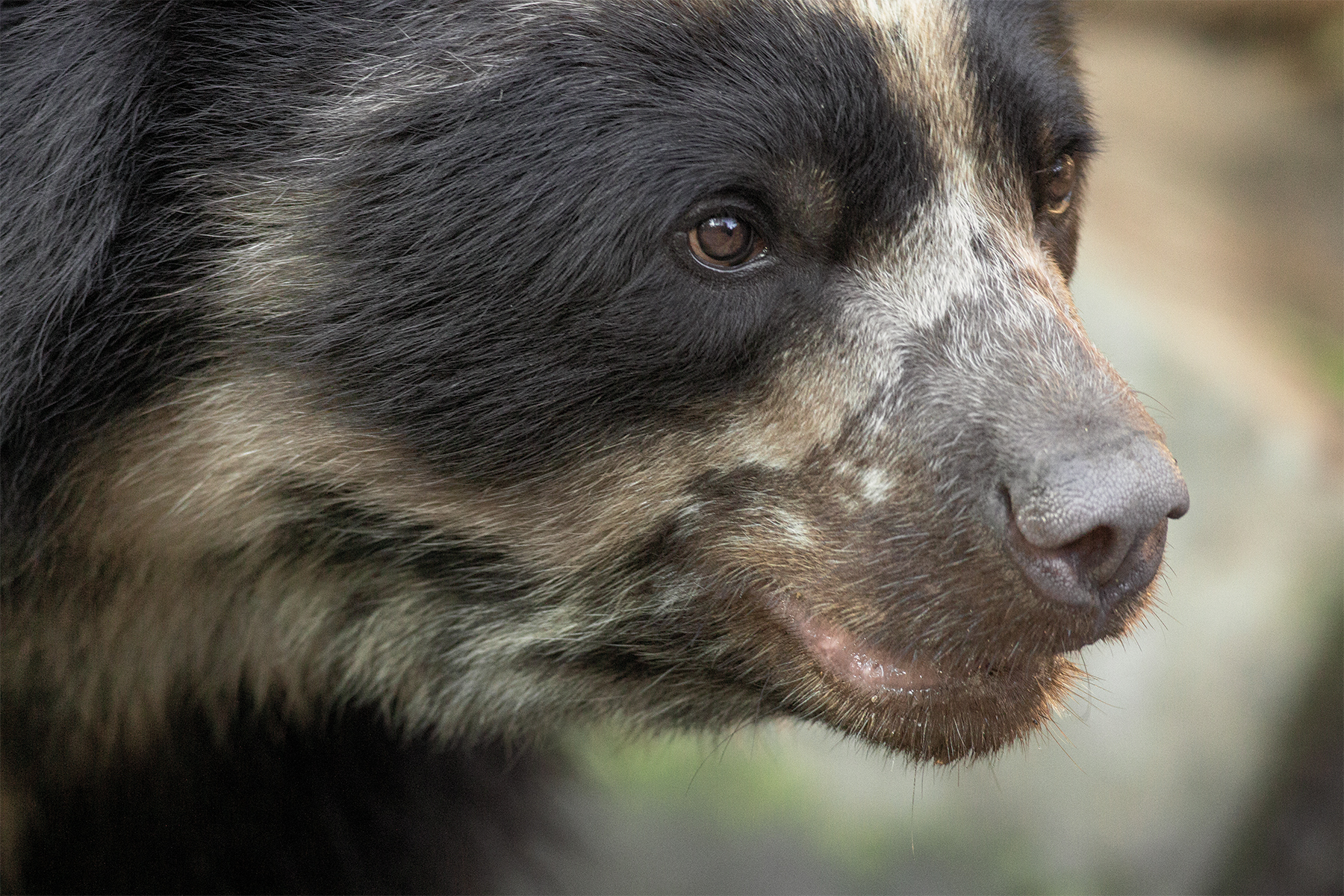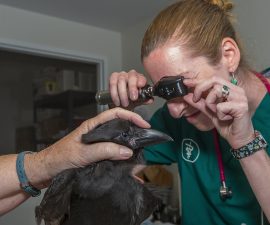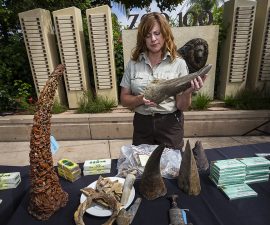BY Russ Van Horn, Ph.D.
Population Sustainability Scientist for San Diego Zoo Wildlife Alliance
To stand at the overlook at Tres Cruces in Manu National Park, in the Andes of southeastern Peru, is an incredible and humbling experience. It can look and feel as though you are a very small and very disoriented human, standing on the edge of the world. If you are a scientist working toward the conservation of Andean bears, you stand at the edge between what we know and what we do not know. The forested slopes below you descend from the sacred Apu (living mountain) Cañajhuay through humid forests, down and up and down again, to the Amazon rainforest. If you follow the trail before you, you will walk in shadows between and below trees covered with moss, vines, spectacular orchids, and bromeliads, and next to towering tree ferns. If you watch carefully as you descend, you will see that the forests vary across short distances, with changes in elevation and orientation. Within these forests live many species that are not well understood, including Andean bears.
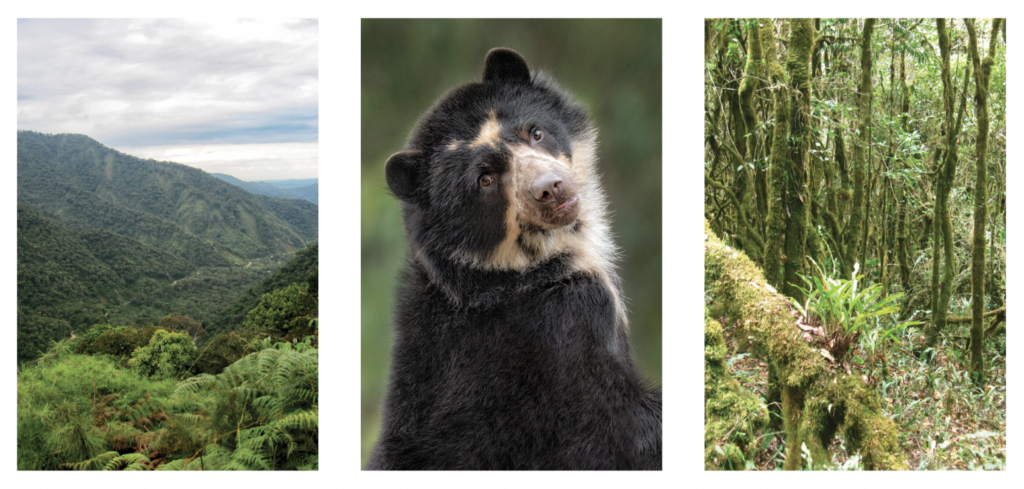
As scientists, we are pretty certain that we know some things about Andean bears. These bears live across one-sixth of the north-south distance of the Earth, and across a range of more than 13,000 feet (4,000 meters) in elevation. They do not attack people, but they have been reported to eat more than 20 species of animals, and over 300 species of plants. Scientists know something else: despite these characteristics, which suggest the potential for the bear to survive alongside humans, these bears are vulnerable to extinction in the wild, and we don’t understand enough about the bears to effectively support their long-term conservation.
Challenges and Questions
The continued existence of Andean bears is threatened by habitat loss, habitat fragmentation, increased mortality of bears after crops are raided and livestock are killed, and various effects of climate change. To respond to these threats, and to answer important conservation questions—such as where are the most important locations for the conservation of Andean bears, or which are the critical spaces to connect remaining patches of Andean bear habitat—we need to improve our understanding of the basic biology and ecology of the Andean bear. In science, the first step in understanding something is describing it, so that we can develop possible explanations and gather data to learn where our thinking was correct, and where it was not. Over the last five years, this is what we’ve been doing—asking, thinking, describing, and thinking again, about the significance of what we’ve observed in the landscape around Tres Cruces.
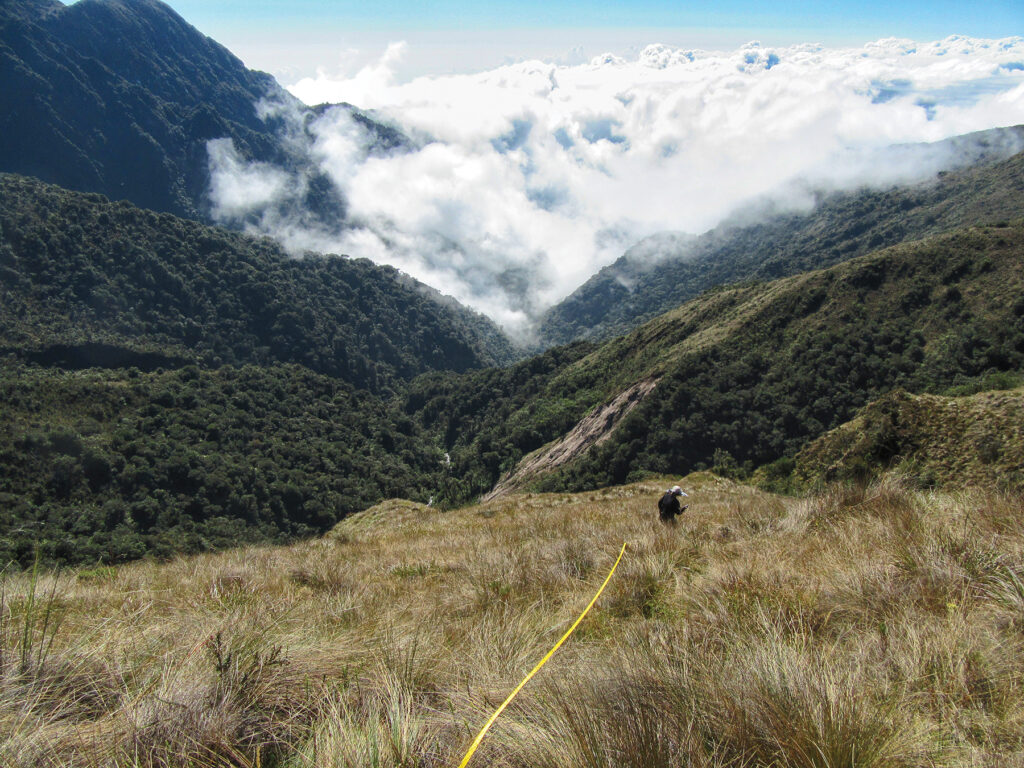
From Tres Cruces, with a light pack and no misadventures, you could walk downhill from the grassland and drop across dwarf alpine forest, cloud forest, upper and lower montane forests, to the Amazon rainforest in less than two days. The rainforest is not far away, but there are no Andean bears there. Through a network of trail cameras, we’ve regularly observed bears to only walk about halfway down these slopes; you could walk down the entire elevational range of the bear in a single day.
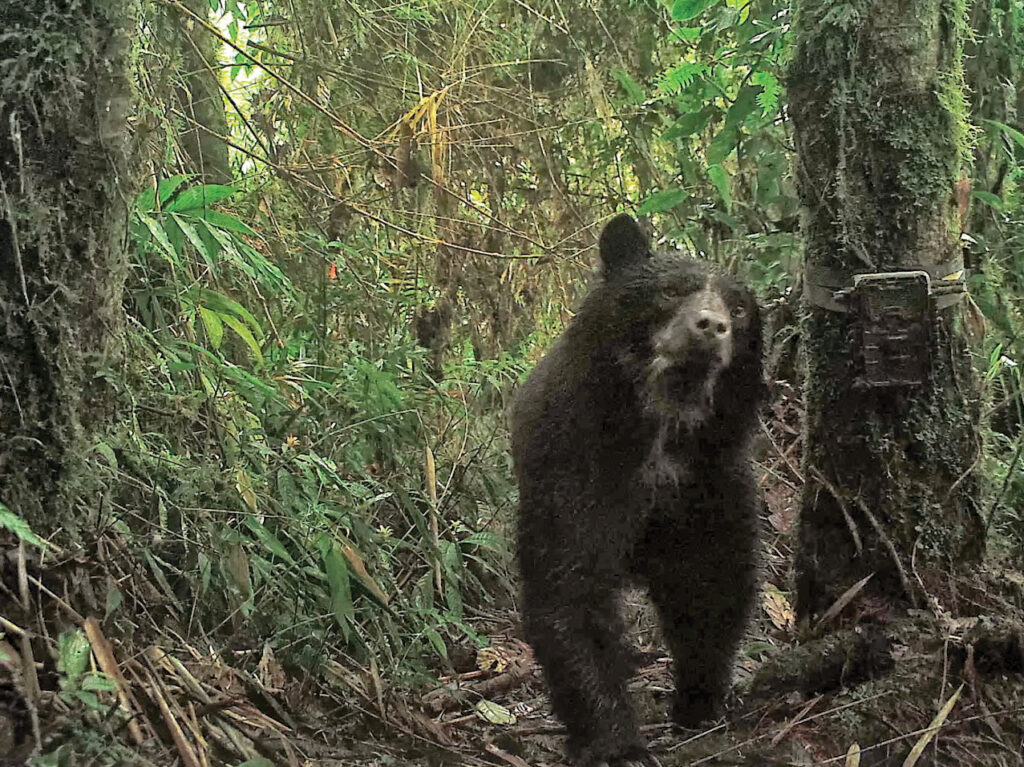
We don’t detect bears lower down, where there appear to be more diverse foods, supporting many more species of birds and primates than live at higher elevations. Why do the bears not descend the slopes to compete for these foods, fish in the large rivers, or forage around illegal gold-mining camps? We do not know yet, but we are analyzing more than 150,000 images of wildlife, including more than 45 species of mammals, to see if patterns suggest that landscape features or negative interactions with other species may keep Andean bears from the lowlands. If Andean bears’ distribution is restricted by interactions with other species, and climate change results in those species moving up the slopes, as tree species are already moving up the slopes, then the bear’s range may shrink even though the slopes remain covered with forest.
Solutions, Tools
Conservationists throughout the Andean bear’s range are trying a variety of approaches to improve the long-term outlook for the bears to exist in a human-impacted world. For example, ecotourism has been suggested as a way for local communities to benefit directly from conserving Andean bears and other large mammals. However, we do not know how the bears might react to ecotourism. Because well-managed tourism should not change the availability of food for bears, or directly change their mortality, it’s possible that tourists would have no impact on Andean bears. However, bears of other species are known to change their behaviors in response to human hikers, so perhaps ecotourism will affect Andean bears. To support effective planning for ecotourism, we’re analyzing data from trail cameras to see whether human presence alters the spatial and temporal patterns of how Andean bears use Andean forests.
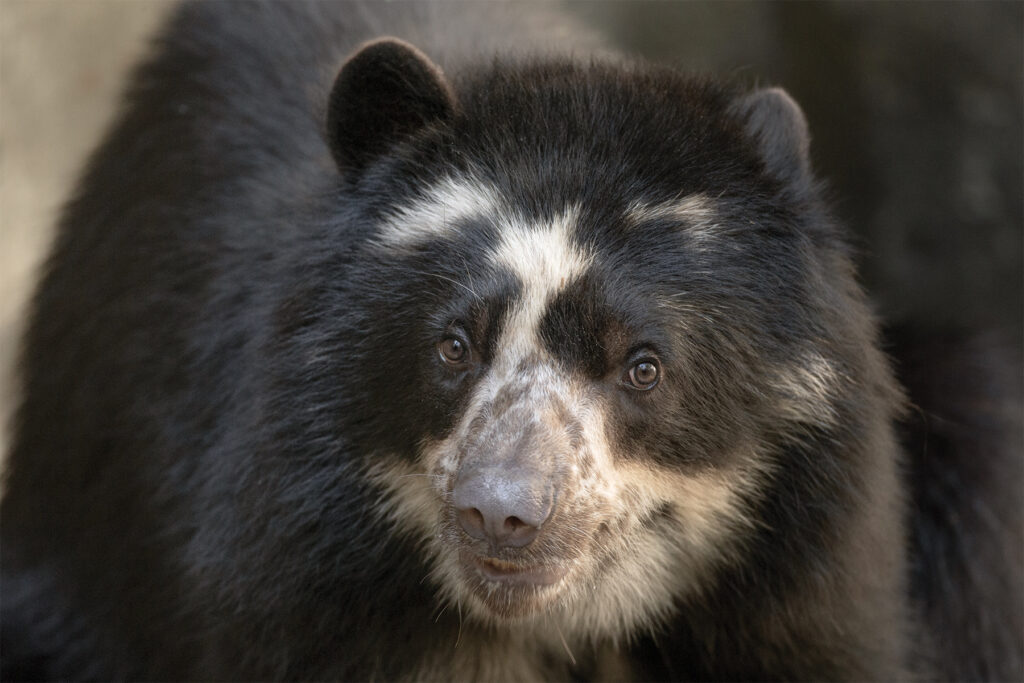
Trail cameras are a valuable tool in our work, and the photos they collect of Andean wildlife are evidence of animals that we almost never see in person. Little by little, we’re building the tools, the knowledge, and the alliances that will help governmental agencies, private land managers, and local communities to more effectively plan their long-term coexistence with Andean bears and other wildlife from the living mountain to the living jungle.
Discover how you’re making a difference for Andean bears and other vulnerable wildlife in this region through our Amazonia Conservation Hub.

